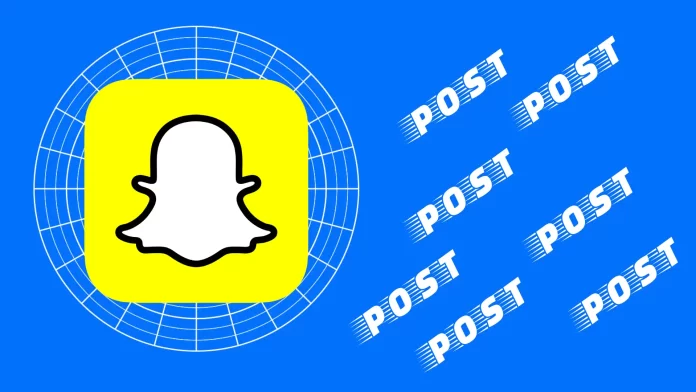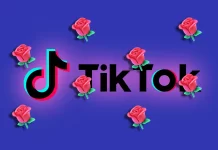Snapchat, a social media platform loved by many for its unique disappearing messages, recently ventured into new territory. Known for its intimate, friends and family-first approach, Snapchat is making an ambitious push to attract more creators to its platform. The goal? To transform Snapchat into a go-to space for public content creation and monetization.
To kickstart this change, Snapchat is expanding its revenue-sharing program. Previously, Snapchat’s revenue sharing was only available to a select group of creators known as ‘Snap Stars.’ But now, the platform is inviting more creators to join. If you’re a creator with at least 50,000 followers, 25 million monthly views, and a history of posting at least 10 Stories a month, you might be eligible to earn money from your Stories. This is a big win for creators who have been looking for more ways to monetize their content on Snapchat.
From private to public
On top of expanding its revenue-sharing program, Snapchat is also introducing new public-facing profiles and Stories. These features are available to any user over 18 and allow users to share private and publicly viewable content from the same account. With this, Snapchat is giving users who may not yet meet the criteria to become Snap Stars a pathway to potentially become successful creators on the platform.
What makes this particularly interesting is how these new features blur the lines between public and friend content. Snapchat has always taken pride in being a messaging app for “real friends,” arguing that disappearing messages reduce the social pressure that often comes with other social media. However, these constraints weren’t always beneficial for creators looking to build a career on the platform. Now, things seem to change.
Further sweetening the deal, Snapchat is not stopping at just offering a cut from ad revenues. The platform also has a music-focused creator fund and pays users for popular Spotlight content. With all these options available, the possibilities for creators to earn on Snapchat are broadening.
Snapchat strikes back
Snapchat’s move towards courting creators comes at an interesting time. With potential uncertainties surrounding TikTok in the US and Meta’s sudden halt on creator payments on Reels, Snapchat’s new focus on creators might just be the perfect timing to draw in more talent. If you’re a creator, Snapchat is making a strong case for why you should consider their platform.
But these changes may come with privacy and safety concerns. Allowing any adult user to make public Snap Stories could open doors for strangers to connect via direct messages, leading to potentially problematic online relationships, harassment, or even worse. Snapchat assures that users must input their age when they create an account, and anyone under 18 can’t change their account age. But these are aspects to keep in mind as the platform moves forward with its new creator-friendly policies.
One thing is clear – Snapchat is no longer just a platform for friends and family. It’s becoming a platform for creators and seems ready to compete with the big players.
Post hard, dream big
Certainly, introducing an ad-revenue-sharing program can act as a powerful incentive for content creators to increase their output. After all, the principle is simple: the more content you post, the more views you garner and, consequently, the more revenue you stand to make. This is especially true for platforms like Snapchat, where ad revenue is directly tied to the number of views a Story receives.
However, the need to consistently generate content to stay profitable can result in what is known as a ‘content rush.’ Where creators feel compelled to produce and post content at an accelerated rate in an effort to maintain or increase their ad revenue. As creators are incentivized to attract and hold viewers’ attention, this often translates into an increased frequency of posts, quicker turnaround times, and a broader range of content.
The content rush is not entirely negative, though. It could increase creativity and variety as creators seek new ways to engage their audience. They might explore different content forms or delve into unique topics to stand out in the crowd. It can also create a competitive landscape that fosters innovation and improvement as creators learn from each other and adapt to audience preferences.
The big rush
As mentioned in the Business Insider story, Snapchat creator Alyssa McKay shared her experience of earning more than she typically does by posting around 100 to 200 panels per day. These shared experiences highlight the significant impact of the ad-revenue program on creators’ income. The expanded program aims to strike a balance between story engagement and advertising, encouraging creators to post more and fuel their income.
Creating Snapchat stories demands less effort than content for platforms like YouTube or TikTok, as it eliminates the need for extensive video editing or thumbnail creation.
This revenue model, however, encourages creators to trade their privacy for profit. They often document their daily lives extensively on Snapchat, from mundane activities to significant personal events. While some may view this as an invasion of privacy, creators like Leilani Green and Eloise Head consider it part and parcel of being a content creator and a more genuine way to connect with their audience.
The disappearing nature of Snapchat stories creates a unique dynamic where creators can upload raw, “random” content without worrying about maintaining a curated feed. Creators like Eloise Head appreciate this aspect as it offers a break from the meticulous curation required on other platforms. Snapchat also recently introduced the ability to schedule stories, providing creators with greater flexibility over their content uploads.
While not all creators are comfortable with the ‘binge posting’ method, most regard Snapchat’s approach to sharing ad revenue as game-changing. The program offers a significant income stream for creators willing to share their lives in real-time. Despite some criticisms, the program’s success suggests that short, low-lift content could be a significant aspect of future creator monetization strategies.
The drawbacks
But the pressure to constantly produce can also have drawbacks. The urgency to churn out content might lead to decreased quality as creators may focus more on quantity. Instead of carefully crafted Stories, viewers may be served rushed, less thought-out content. There’s also a risk that creators may sacrifice their originality or authenticity to chase trends that attract views.
Moreover, the constant need to post can result in creators feeling overworked and stressed. The ‘hustle culture’ associated with content creation can lead to burnout, a very real problem in the creator community. Balancing the need to maintain a steady stream of content with personal well-being can be tricky.
The revenue-sharing model also indirectly encourages creators to keep their followers constantly engaged. This could lead to increased pressure on viewers, who might find themselves overwhelmed by a never-ending stream of content from creators they follow. Viewer fatigue is a real issue and can result in a decrease in engagement, which, ironically, might affect the very ad revenue the creators were trying to increase.
While ad-revenue sharing programs can offer lucrative opportunities, they also fuel a content rush that impacts both creators and their audiences. It’s a double-edged sword that needs careful handling. For the model to be sustainable, it’s crucial for creators to strike a balance between producing engaging content at a consistent pace and ensuring the quality and authenticity of their work while also taking care of their mental well-being.





